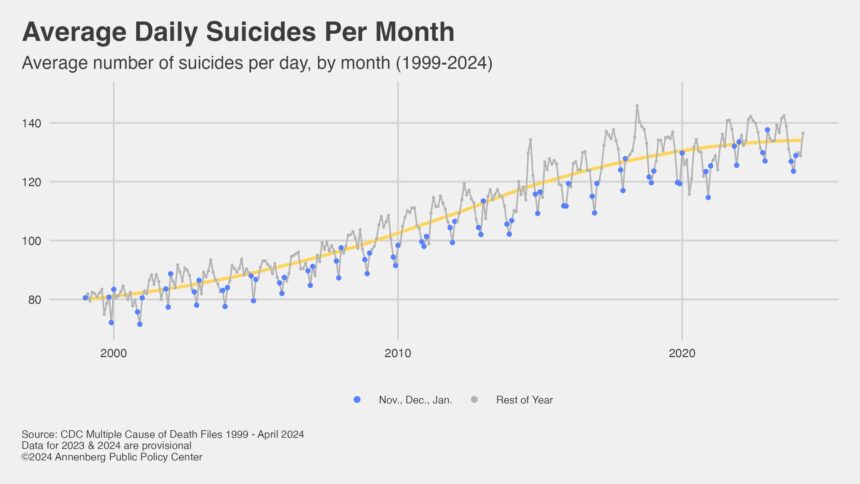The holiday season is often associated with a variety of emotions, including joy, celebration, and sometimes sadness. One common misconception that has persisted over the years is the belief that the suicide rate increases during this time of year. Despite efforts by mental health researchers and journalists to debunk this myth, it continues to be perpetuated in the media and by well-meaning community figures.
A recent analysis by the Annenberg Public Policy Center (APPC) of the University of Pennsylvania found that more newspaper stories supported the false idea of holiday-related suicides than debunked it. In fact, over the past 25 years, only about a third of the coverage has aimed to dispel this myth. The persistence of this misconception can have harmful effects, especially on vulnerable individuals who may be experiencing a crisis during the holidays.
While some media outlets continue to perpetuate the holiday-suicide myth, there are also stories that challenge it. Mental health professionals and experts have emphasized the importance of not sensationalizing the risk of suicide during the holidays, as this can have a negative impact on those struggling with mental health issues. It is crucial to provide accurate information and resources to support individuals during this time.
According to CDC data, the months with the lowest average daily suicide rates are typically in the fall and winter, with November, December, and January showing lower rates. This pattern is consistent in countries like Australia as well, where the onset of winter correlates with lower suicide rates.
In an effort to support vulnerable individuals, the National Suicide Prevention Lifeline was renamed the 988 Suicide & Crisis Lifeline in July 2022, with 988 as its nationwide phone number. However, awareness of this lifeline remains low among the general population. Increasing knowledge about the 988 lifeline can help save lives and provide crucial support to those in need.
As we continue to navigate the holiday season and support those who may be struggling, it is important to rely on accurate information and resources provided by reputable sources such as the CDC, Suicide Prevention Resource Center, National Institute of Mental Health, and SAMHSA. By dispelling myths and promoting awareness of mental health resources, we can help create a safer and more supportive environment for those in crisis.







